On the fourth day of my visit to the Dalmatian wine region of Croatia, I needed to buy another suitcase.
I’d tasted so many wines that I had known nothing about but now absolutely loved, that I had started collecting them. Because of the small production and unique grapes in the region, I knew that I’d never be able to have any of these wines of Croatia again. I wanted to take home little tastes to remember one of my favorite places to visit in the past decade. So I bought another suitcase to carry them home.
The suitcase filled quickly.
In Croatia, Wine is Personal
When I go to Napa, I’ll visit a few wineries, enjoy incredible food at great restaurants, and trust the sommelier to pour me something delicious. The tasting rooms are sleek, modern, and sophisticated.
But there’s an undeniable commercial atmosphere at these big California tasting rooms. I know what to expect, and I’m not often surprised. If I like anything, I can usually find it later at the store. The owners are nowhere to be seen.
But in Dalmatia, on the southern coast of Croatia, it’s a different experience. The wine is so personal.
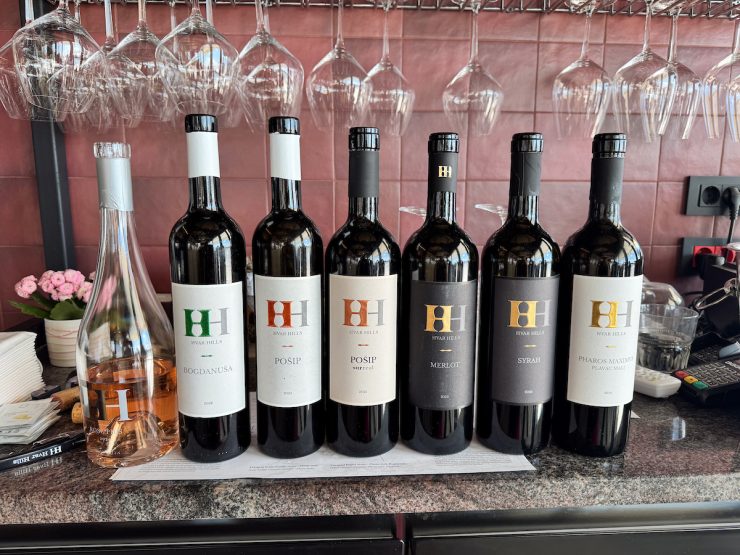
When I would meet someone in the industry, like Monika, who owns Provic Winery, or Niksa Vujnovic of Vujnovic Winery on Hvar Island, inevitably they grew the grapes and made the wine themselves, and their wineries have been operating for generations. They were there, presenting their own wines in their own wineries, telling their own stories.
In Dalmatia, drinking wine is like watching live theater instead of a movie. The experience I had with each glass was unique and could only be enjoyed in the moment.
A Long History of Dalmatian Wine
People have been making wine in Dalmatia for 3,800 years, dating back to the ancient Illyrians, who settled the picturesque islands off the coast of what’s now Croatia, in the Adriatic Sea.
Despite centuries of winemaking expertise, very little of the wine produced today reaches the international market. However, this is changing as a few larger wineries embrace overseas investment and increase their exports.
Over the ten days in Dalmatia, I sampled 82 different local wines. I went to two wine festivals, three tasting rooms in Split, a vineyard in Brač, a local wine shop on the Island of Korčula, and more than ten restaurants throughout Dalmatia that poured local wine. It was a true deep dive into the rich and diverse wine culture of the region.
Split: Festival Vino Dalmacije
On the first day of my trip, I attended the Festival Vino Dalmacije at the Le Meridien Split, now in its seventh year. It was an absolute speed run of Dalmatian wine culture, featuring 66 mostly family-run wineries.
At virtually every booth, I was meeting the vintner, the owner, and the families who actually made the wine. They were so proud of their wines and excited to share their traditions, grapes, techniques, and the importance of preserving the unique character and quality of Dalmatian wine. While many wineries are embracing new technology, generally there is a deep attachment here to preserving the diversity of indigenous grapes and the best of traditional practices.
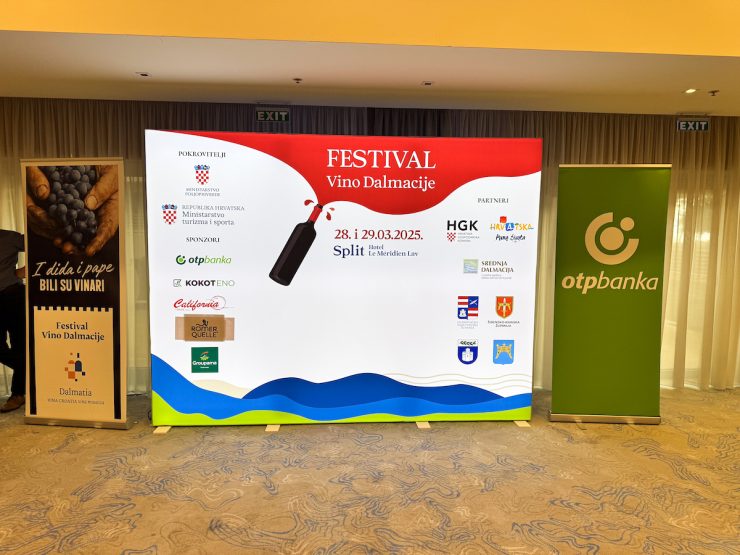
I was also struck by the variety of grapes: There are 198 different grape varieties grown in the region, 125 of which are indigenous and found only in their place of origin.
When I’m picking out a bottle at home, it feels like I have 40 choices of the same oaky Chardonnay from California. U.S. growers usually cultivate and sell American strains of European grape varieties, and California winemakers almost never produce wine from indigenous grapes.
Dalmatian Croatian wines, by contrast, are deeply rooted in their native terroir, offering bold, complex flavors from ancient, indigenous grape varieties that have been cultivated for centuries along the Adriatic coast.
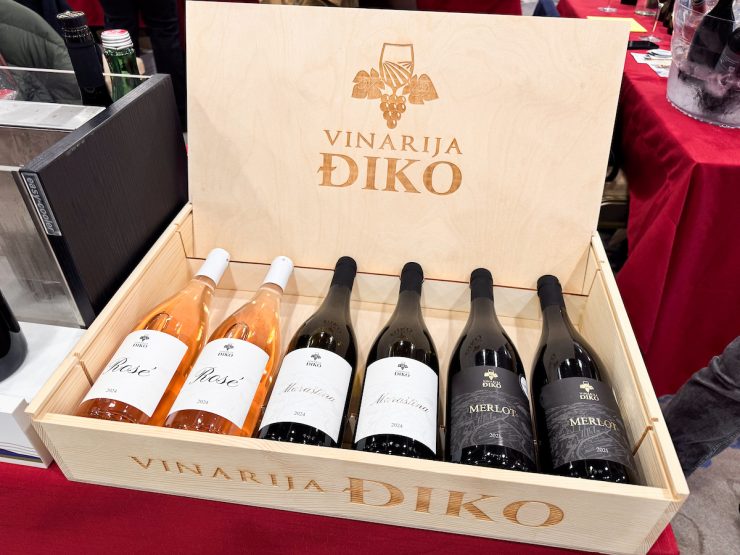
Pošip Ten Ways
At the festival, I tried Pošip at least ten different ways. Pošip is a popular white grape grown on the coast, known for its high acidity, complex aromatic qualities, and flexibility of style. It doesn’t have just one profile. When the grapes ripen on the vine longer, the wine is richer, sweeter, and more complex.
I love a crisp white, so right away I was loving the Pošip, especially those aged in stainless steel. Vina Deak, a family-owned winery and vineyard along the coast, poured me some of my early favorites. They make a few different Pošips, some dry and light, and some made sweeter for the German and American tourists that come by.
I loved the Pošip Rhapsody, from sweet, extra ripe grapes they pick at the end of the season. They stop the fermentation earlier to retain the sugar.
Another Pošip that stood out for me was from Ego Vina. Their 2023 Pošip was fresh but full-bodied, really easy to drink.
Rosés to Love
I’m a rosé girl at heart, and fortunately, there was a lot to love. There was a fabulous rosé from Kusic, called Asanaginica, a rich and vibrant Syrah with a slight sweetness. It’s named after a sorrowful 17th-century ballad from where the wine is made, Imot.
Another delicious rosé with a romantic name was Teuta, a syrah-trnjak rosé from Provic winery, named after an Illyrian queen from 230 BC. Monika Provic and her brother run the winery together near an old Roman city, so all of their wines have Roman-inspired names. The trnjak in the rosé I loved is an indigenous grape often compared to Zinfandel, and adds a beautiful berry and leather note to the wine.
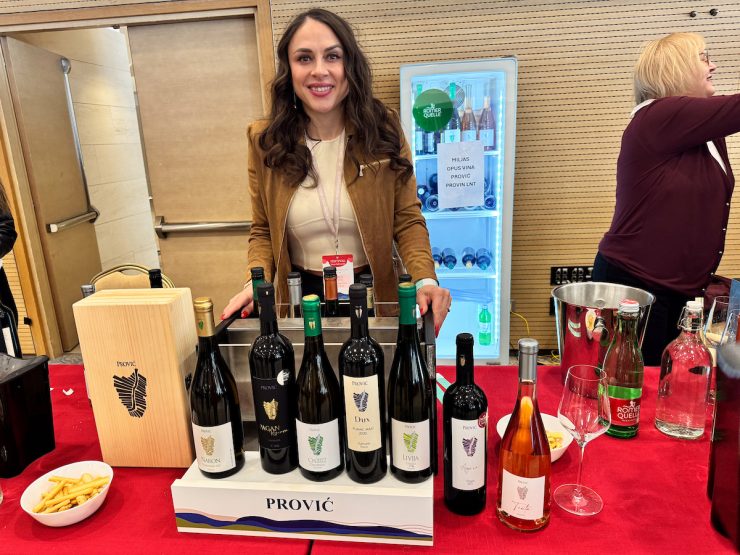
If I mentioned loving something, someone would immediately find me five other wines to try in the same style, or near to it. When I went to the Sikuli table to try their wines, they heard I loved rosé and pulled out an unlabeled bottle of something they hadn’t even named yet. It was fantastic — fresh and bright and lovely.
Drinking In Split
After the festival, I was invited to tastings at Hvar Hills, Markus, and Sikuli for a more in-depth exploration of their wines.
At Hvar Hills’ tasting room, a beautiful place by the sea, we met the owner, who owns and operates the tasting room in Split and also the vineyard on the beautiful island of Hvar. I loved tasting the Bogdanuša 2024 (also the name of the grape, which means “Given by God”). It’s grown and produced only on the island of Hvar. It’s a light white wine aged in stainless steel, and very refreshing.
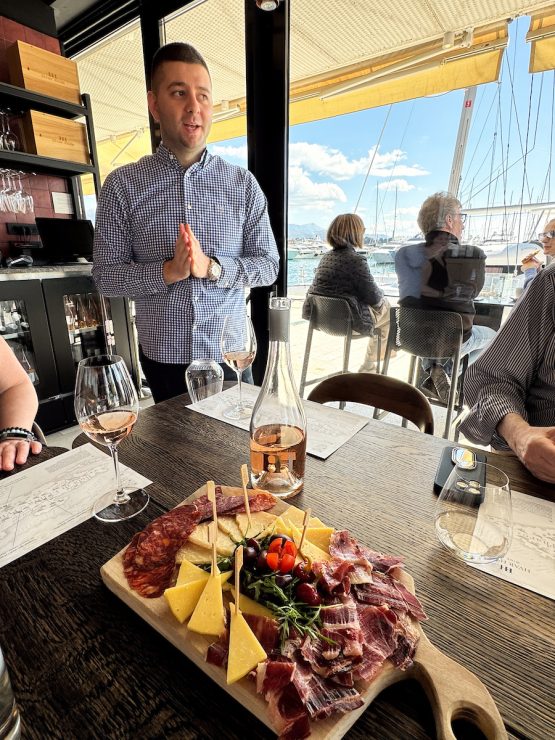
Of course, we tried more Pošips, which I also enjoyed, and the Pharos Maximvs 2019, made from Plavac Mali, another indigenous grape from Dalmatia. Aged two years in new oak, then two years in the bottle, it’s big, bold, rich, and juicy. While difficult to cultivate, the grapes grow beautifully on the rocky hills. Only 2,000 bottles were made.
Getting Hip at Markus
After Hvar Hills, we went to Markus, another large winery with a gorgeous tasting room in Split. This hip spot has a wine cave-inspired design featuring arched stone walls, dim lighting, and rustic wooden accents, producing a very elevated, cosmopolitan feel. With help from a Canadian investor, their winery recently managed a huge expansion and now has 22 hectares of vineyards.
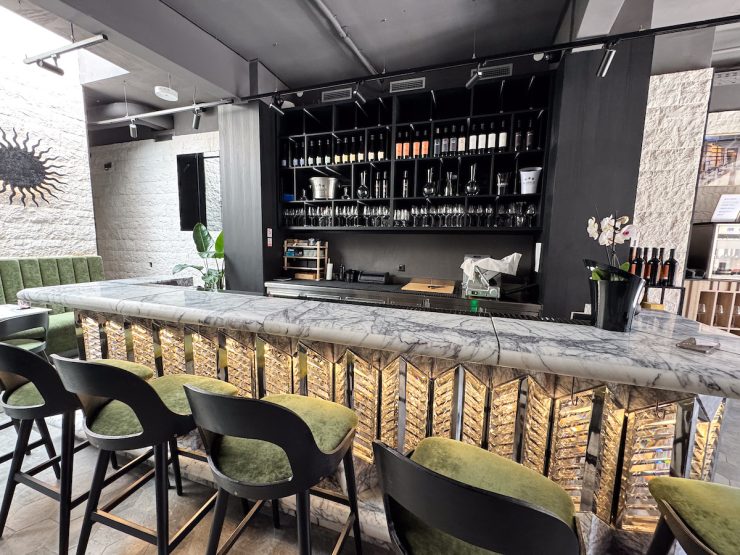
Ivona Jeličić and her husband, the winemakers of Markus Fine Wines, are very focused on Dalmatian heritage and local grapes, but also on modern winemaking. You can find a lot of interesting traditional styles of winemaking at other wineries in the region, but at Markus, they’re using the latest and most sophisticated technology and practices to create elegant and sophisticated wines.
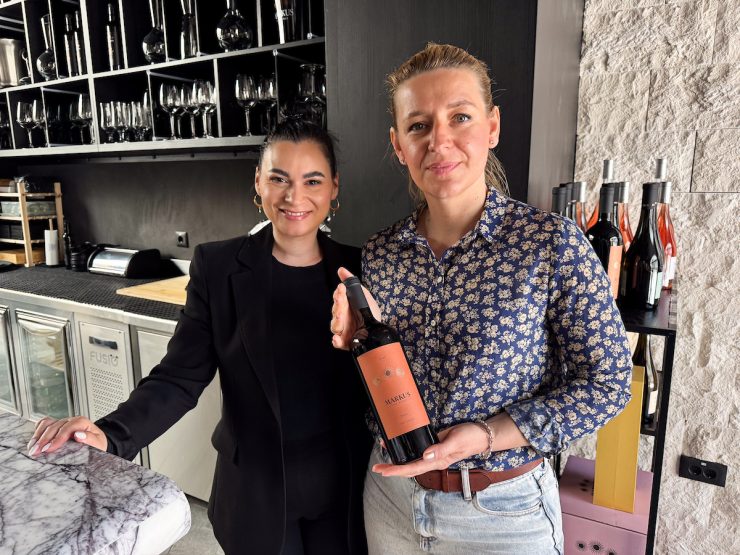
After Markus, we headed to Kastel Sikuli, where they hosted two other wineries for another round of tasting and lunch. We tried an additional 12 wines, including a delicious Pošip/Chardonnay Sparkling from Kastel Sikuli, a steel fermented Maraština, another indigenous grape, from Matela Wines, and a 2024 Rosé from Vuina Winery. One special moment came with a 2019 Glavinuša, yet another unique indigenous varietal, also from Matela. The winemakers produced only one barrel of the Glavinuša, so I belong to a very small group of people who have enjoyed it.
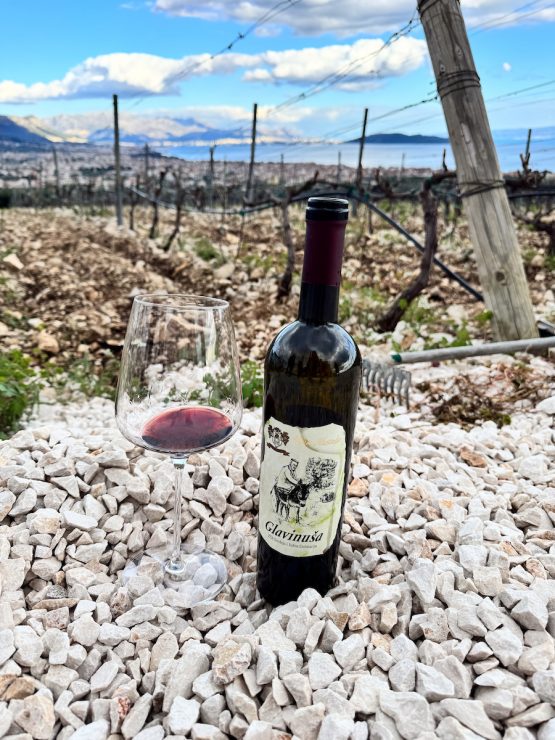
The moment that stood out was when the representative from Sikuli remembered that I had loved the unlabeled rosé at the wine festival the day before and had set aside a bottle for me to take home.
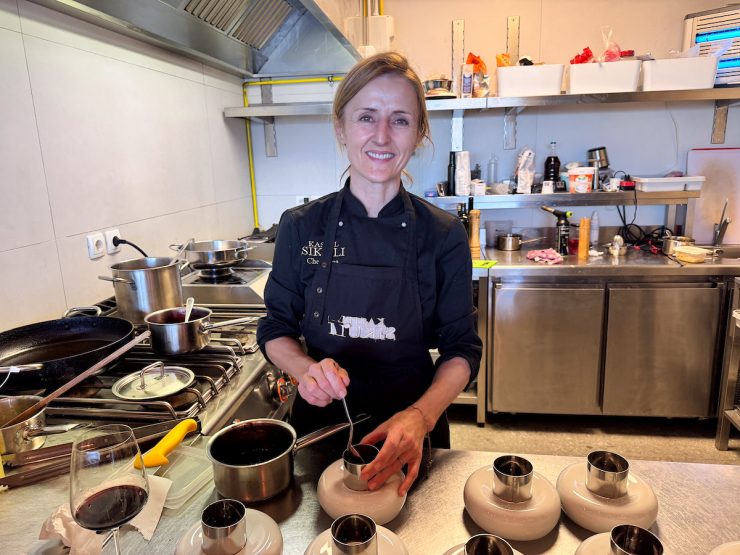
I eventually had to stop telling wine reps I liked their wines. I knew I couldn’t fit any more in my suitcase.
The Stony Island of Brač island
I had the pleasure of taking a ferry from Split to the famous island of Brač island, where some of the stones that used to build the White House were quarried. Petar, the operations manager for Stina Winery, picked me up in Brač and drove me out to his vineyard. Stina is one of the largest wineries and exporters in Dalmatia, so there was a lot to see.
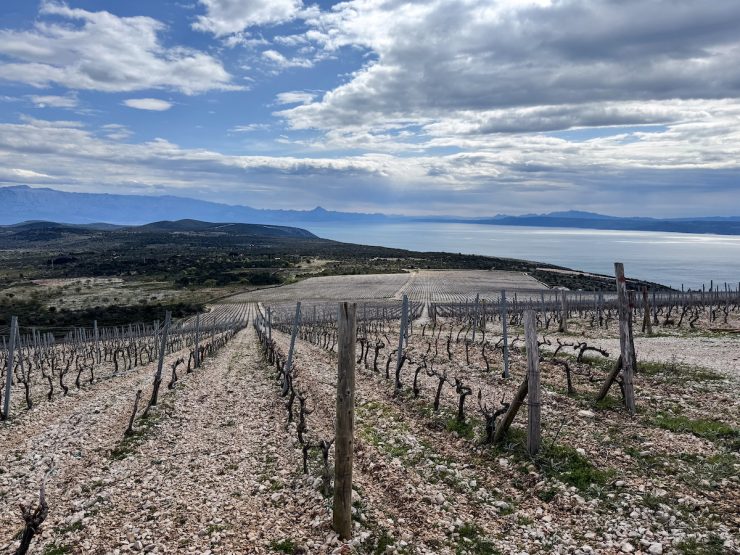
As we drove up, passing spectacular cliffs rising above the Adriatic sea, I marveled that they could even grow wine here. The vineyards cling to the side of the mountains in rocky terrain. How are the grapes even alive?
The answer is patience. And care. And close attention to the climate.
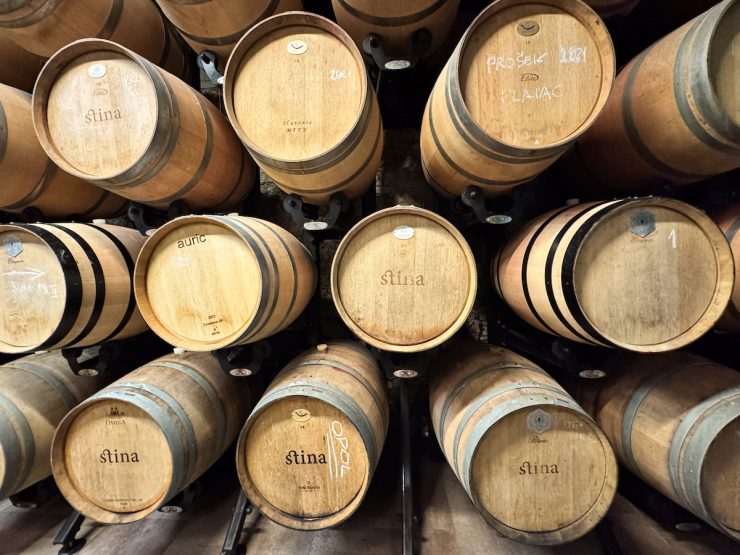
Last year, the summer was too hot and they had to harvest the grapes early, on August 6. Most of the harvesting is done at night because the summer days get too hot. Global warming is changing how the harvest is handled throughout the Dalmatian wine region, and many wineries are harvesting earlier each year.
A Day in Korcula
On Tuesday, I looked at all the wine in my tote bags and realized I needed to buy a new suitcase to haul it all home. I couldn’t leave these beautifully hand-selected small production bottles here in Croatia, and I also couldn’t possibly drink any more. So, I went shopping and enjoyed a day without drinking (mostly).
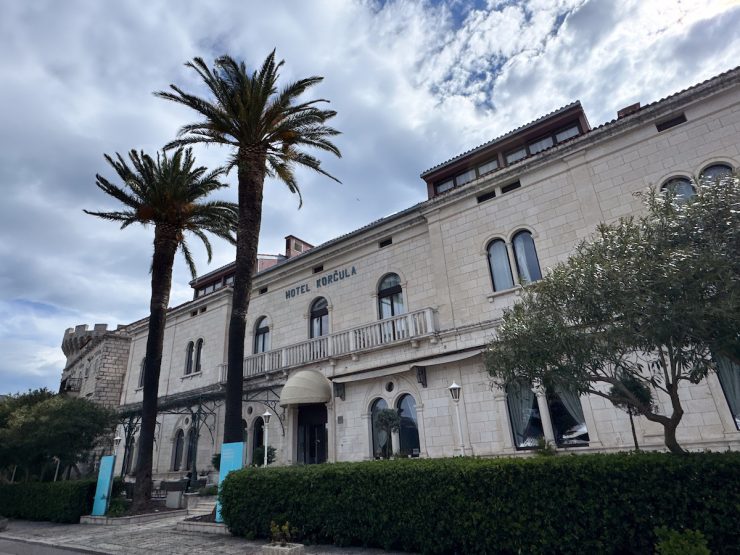
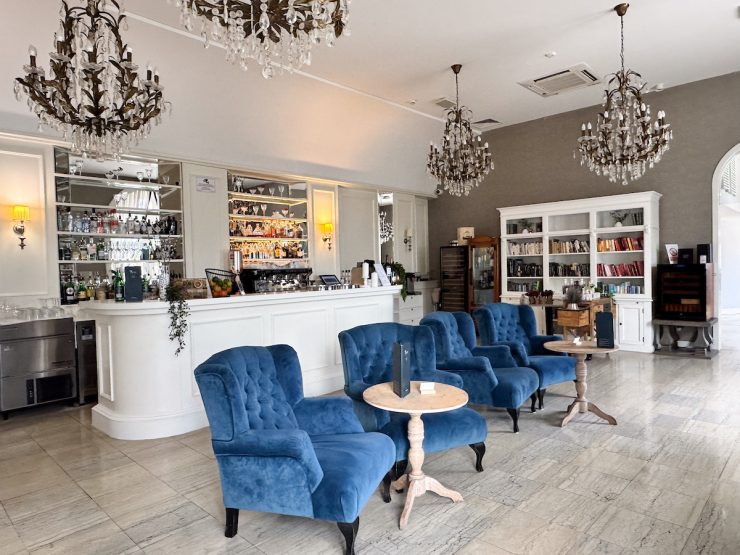
I was staying at the Aminess Korčula Heritage Hotel. When I arrived for dinner at their restaurant, The 7 Seas, the staff looked shocked when I said I didn’t want any wine with my (amazing, by the way) three-course sea bass dinner. Wine is such a huge part of Dalmatian culture that they were seriously concerned about my health and overall enjoyment. I had to show them pictures of me drinking local wine over the previous four days for them to understand. I have rarely experienced this level of personal attentiveness in my travels.
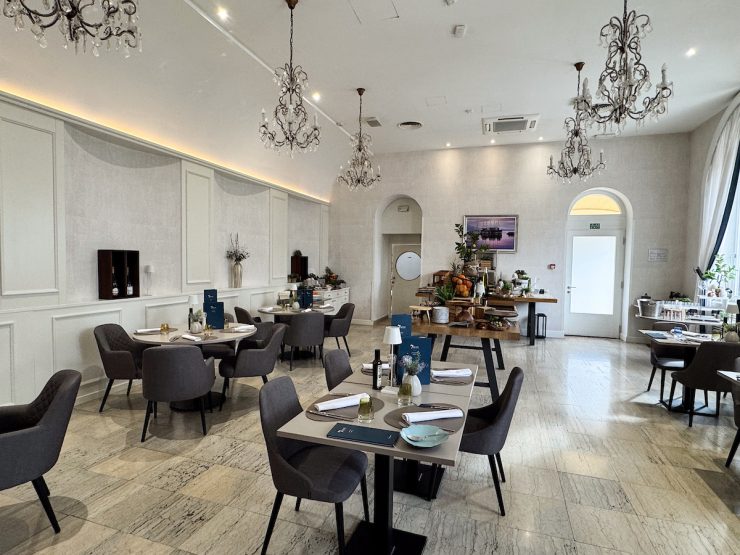
The next day, I went to OPG Protic Sanja for traditional cake and tasty local homemade bites. Mirna Petković, the representative for Bačić winery in Blato, brought a selection of beautiful wines to pair with everything. We tried sparkling and still white wine made from the local grape, Cetinka. It was cool to do a wine tasting at this beautiful local home with perfectly paired homemade sweets and local cheeses.
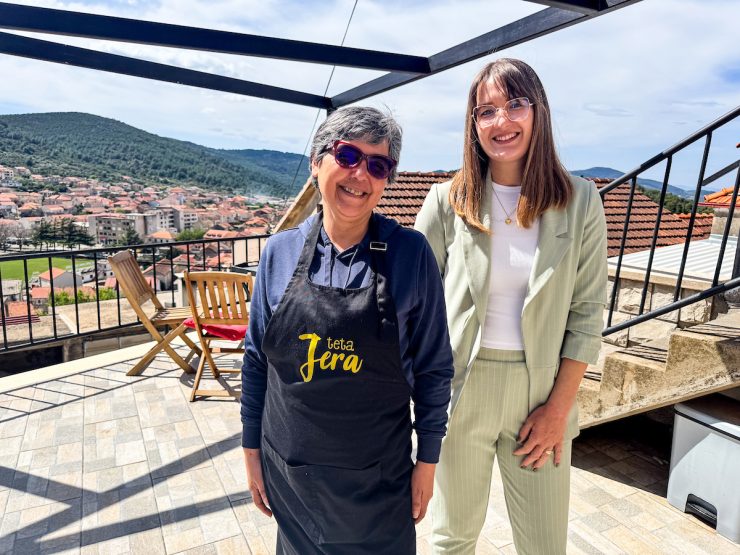
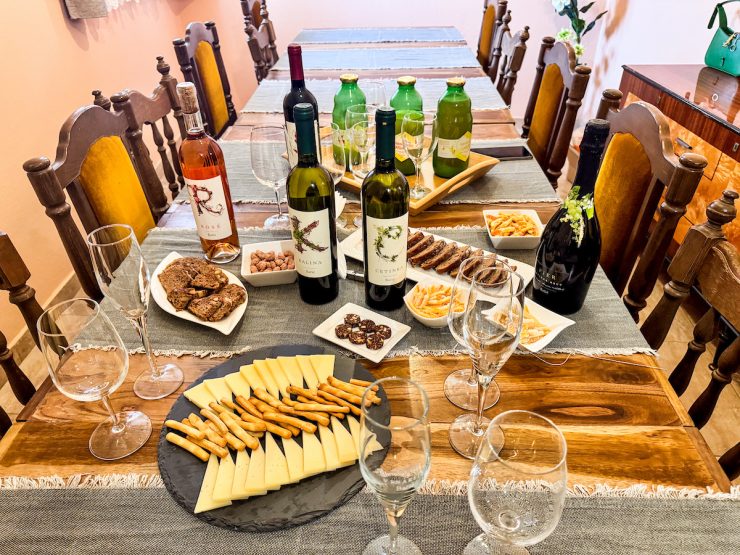
A Visit to Hvar Island
On Hvar Island, I stayed at Hotel Villa Nora, in the family’s charming guesthouse. Once again, the service was exceptional. Nora greeted me at the ferry and kindly carried my luggage during the short walk up the hill. Knowing I was recovering from several days of drinking, she prepared a beautiful breakfast to help me feel better.
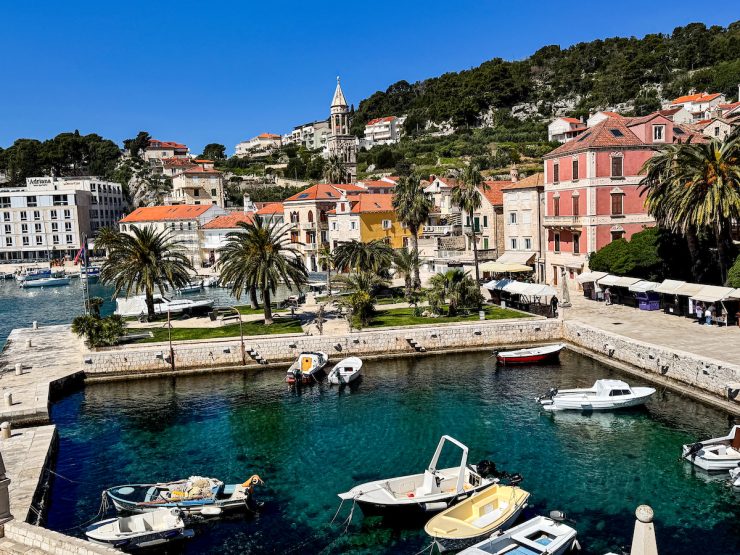
My tour guide, Zorana from Debonda Tours in Hvar, took me on a massive tour of the island. I cannot recommend her enough. We saw a lot of Hvar, with many spectacular views that only a local would know. We also visited the viticulture museum in the small town of Pitve, where I learned even more about Croatian wine and specifically how its history is integral to Hvar culture and identity.
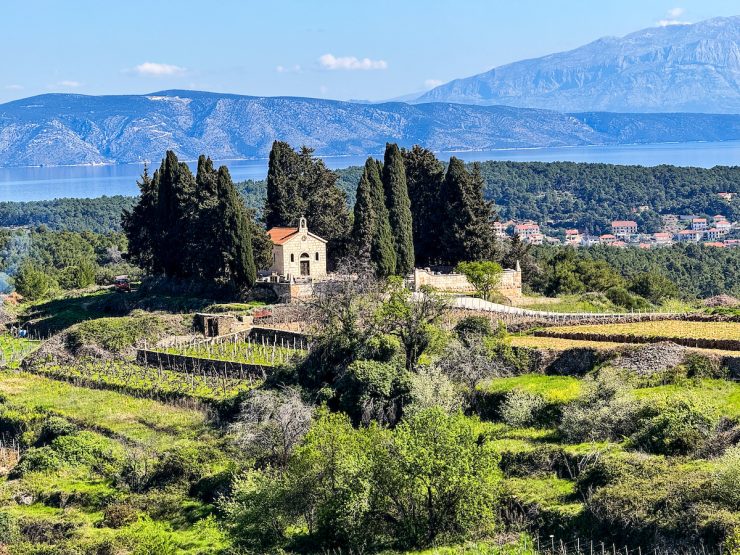
The Hvar Wine Festival
The Hvar Wine Festival featured primarily Hvar wines. The atmosphere at the festival was wonderful — a spring day near the harbor, turquoise water gently rocking the small boats. The Arsenal feels like a huge wine cave inside, and it was really fun to taste Hvar wines and styles while snacking on oysters, truffles, and local olive oil.
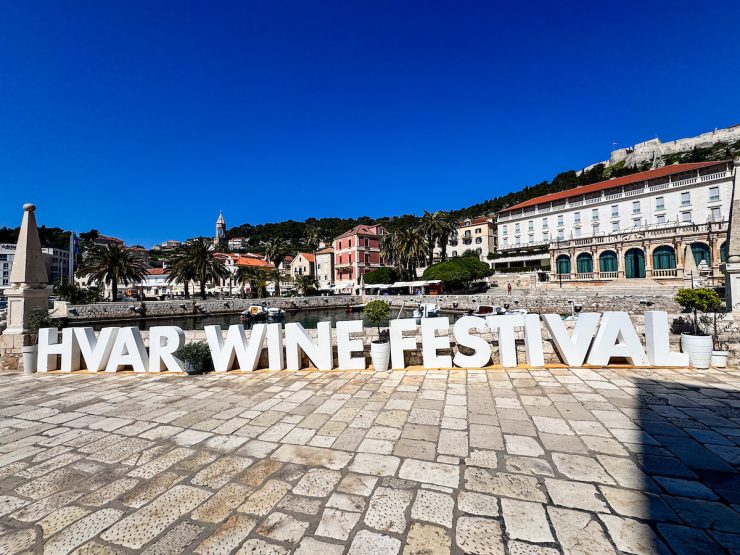
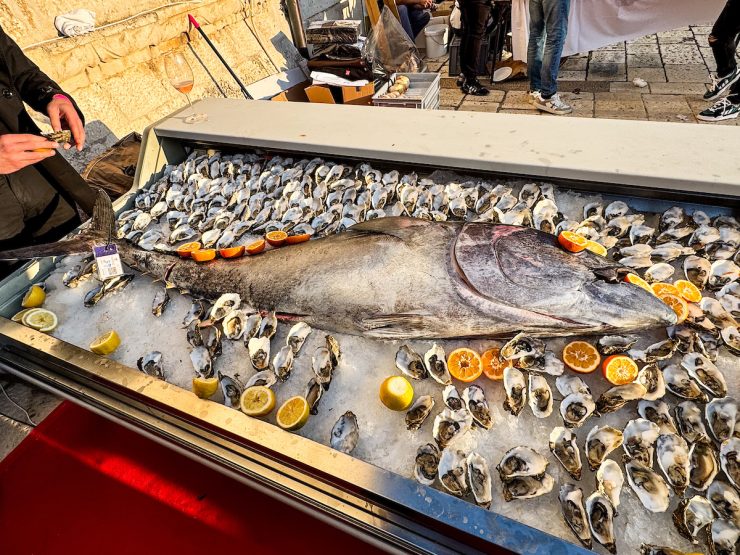
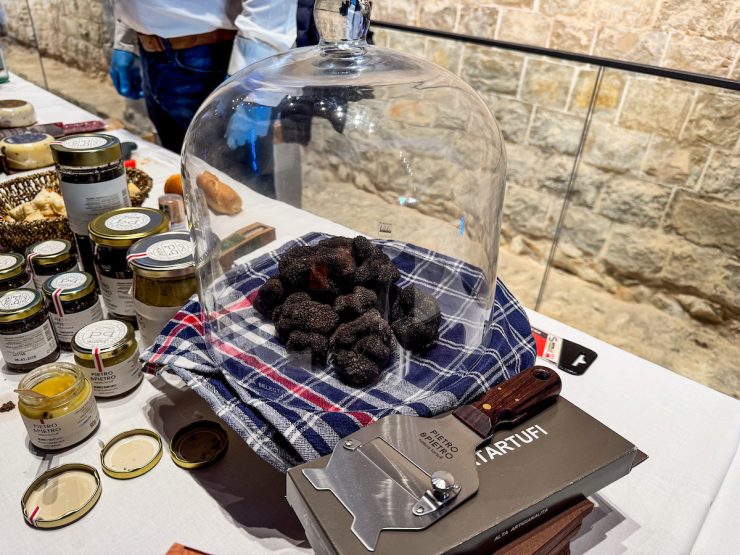
Just like the wine festival in Split, someone integral to each winery staffed every booth, eagerly sharing their products and stories. I loved being able to try Prč, a Dalmatian indigenous grape kept alive only on the island of Hvar, from Kvalitetno Vino.
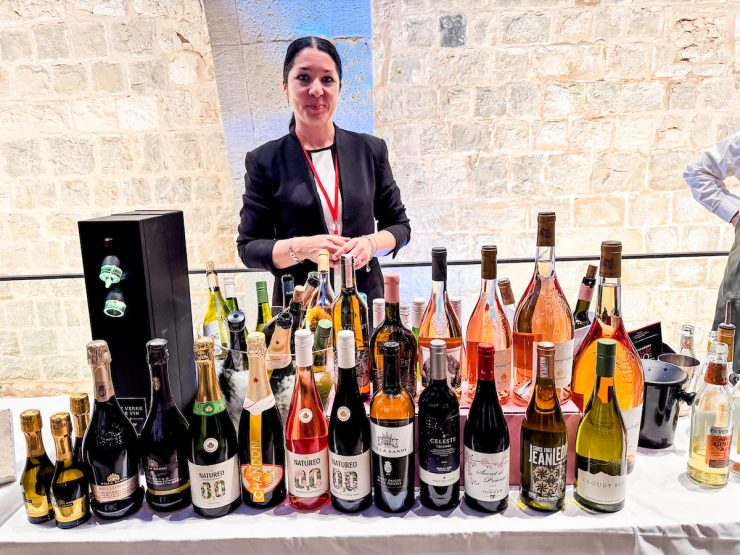
Another favorite moment of the festival was speaking with Niksa Vujnovic of Vujnovic Winery on Hvar Island and trying their wine. A family of archeologists, they pair their knowledge of ancient history with the love of the land, and they make a really tasty rosé. Focusing on ecological methods, they grow mostly indigenous grapes and have been making wine in Dalmatia since the 1600s.
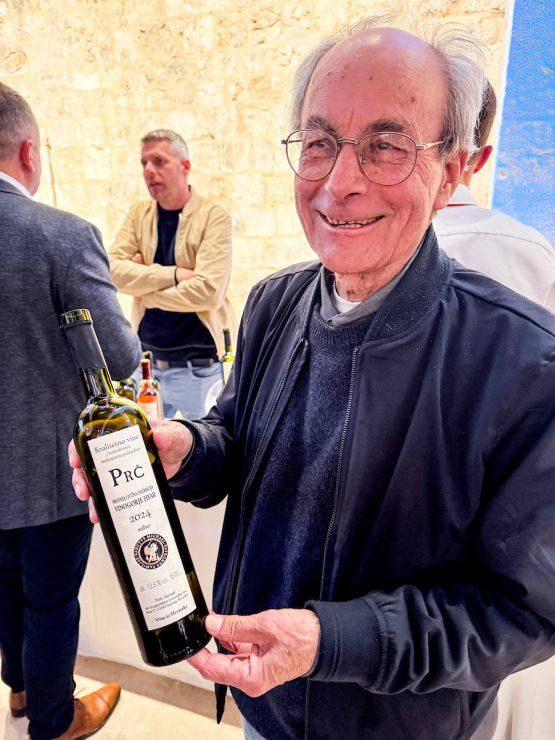
My Suitcase And My Heart Was Full
But it was back on Korcula Island, the day before, where my Dalmatian wine visit reached its true conclusion. There, I visited the Black Island Winery tasting room and tried the Pošip and a few others. My favorite was a 2023 rosé with a hot pink cork. I made the mistake of telling them how much I loved it.
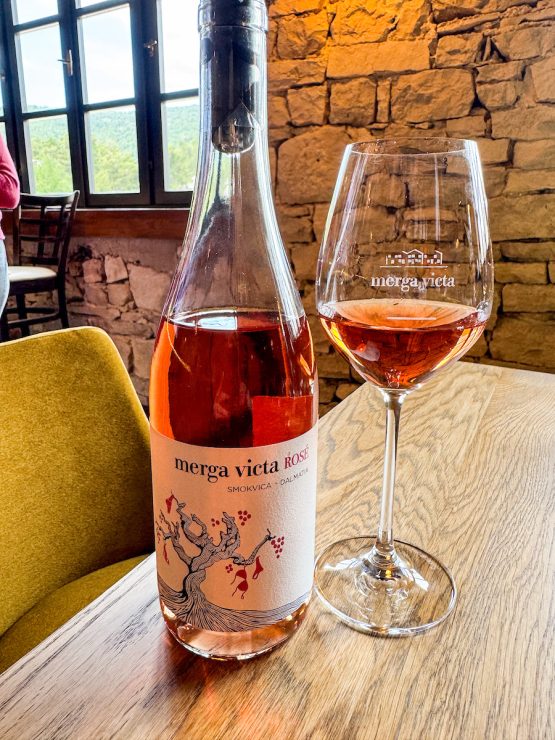
They gave me one of the last bottles available that I managed to squeeze into my new suitcase.
Special thanks to Festival Vino Dalmacije, Aminess Korčula Heritage Hotel, Visit Korčula Tourism, and Visit Hvar Tourism for hosting us on our wine journey across Croatia.
You might also like:
- A Real Dive Bar: Discovering an Underwater Wine Cellar in Croatia
- Greece’s City of Gastronomy: The Food of Thessaloniki
Read more from Amy Harris on her website: The Travel Addict

